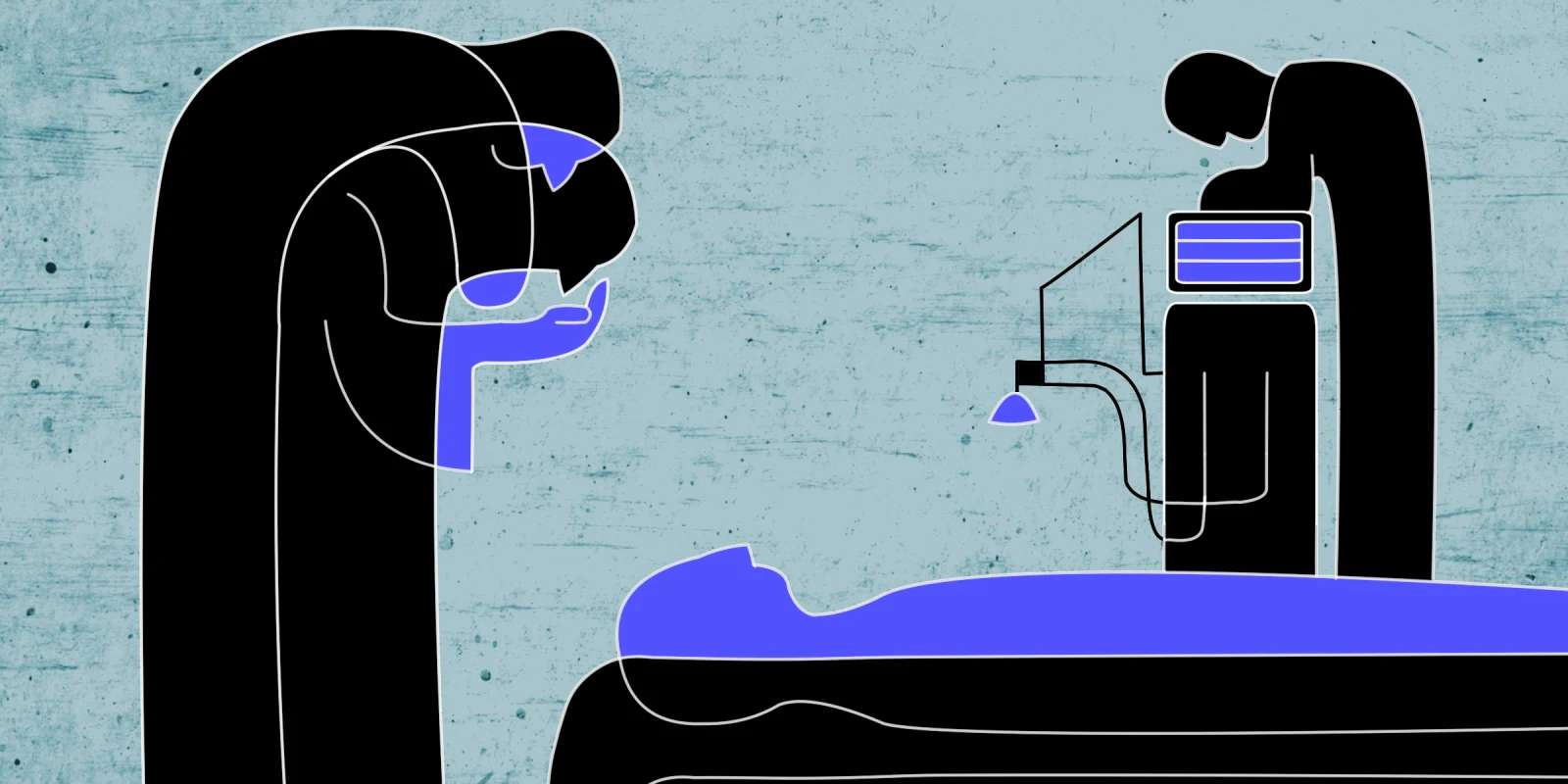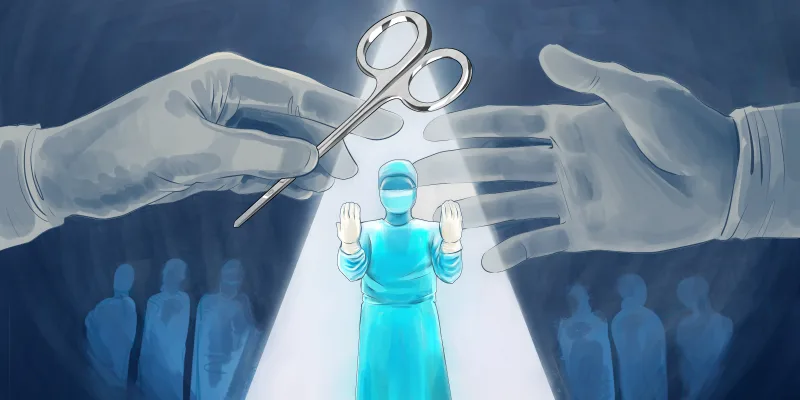The room was filled with people. My dad’s siblings, parents, and immediate family packed the small hospital room. My father was dying, and it wouldn’t be much longer. The crammed room poured into the hallway where other doctors and nurses gathered to catch a glimpse of my father one last time.
My father passed away seven days after seeing his last patient in the ICU. He was a pulmonary critical care doctor. He died on his own unit. Some of the patients in-house were his patients. He died surrounded by his personal and professional families. Each group loved him tremendously and mourned the loss of an outstanding person.
Not many people die surrounded by their personal and professional families. As a combined family, we grieved the loss of an amazing father, son, brother, physician, colleague, and mentor. While ICUs are known for death, they are not known as places for peace and comfort during the death and dying process. My experience with my father made me wonder: is there a better way? Death is common in the ICU, so why are we overlooking the patient, family, and clinician suffering caused by outdated rules and regulations?
When I was younger, I dreamt of being a physician just like my father. I dreamt of battling death every day with extravagant technology and futuristic support systems. I craved the technical wizardry and was fascinated with the biological processes occurring during acute illness. I wanted to elegantly orchestrate the ventilators, pressors, and other lifesaving measures with ease. But the experience with my father drastically changed my naive perspective. The whirring machines, buzzing devices, and incessant beeping alarms during my father’s death did not help me. I saw none of the elegance, grace, and awe I had conjured in my imagination of critical care physicians. In reality, the technical wizardry detracted from the environment; and most importantly, it never gave me a hug. The machines, technology, tests, and interventions did not compensate for scarcely present compassionate care. While all the monitors were balanced, alarms tended, and numbers corrected, my suffering as a family member continued to grow, and nobody noticed — no alarm sounded.
At this moment, I realized critical care medicine had the opportunity to be more than technological miracles, because the human component of critical care was just as important as lifesaving medical interventions.
There are several reasons compassionate care is cast aside in a clinical setting. Sterile and standardized hospital environments are designed for the clinical demands during complex procedures, which is the opposite of holistic and personalized healing environments. In the ICU, the lights are always on and people are constantly in and out of patient rooms. During my father’s seven-day stay, my circadian rhythms lost all bearing and I was confused whether it was day, night, or somewhere in-between. My personalized environment — my home, my bed, my clock — was nowhere to be found and I lost touch with the outside world. In addition, no one told me to do normal human things. No one told me when to eat, when to sleep, and when to shower. This may seem mundane and irrelevant, however, simple normalcies drastically improve my cognitive ability, emotional processing, and physical appearance (which everyone appreciates). The confusion, even in a standard environment, compounded my stress and detracted from my healing during my father’s dying process.
Additionally, there was a deep loneliness. Visitors were only allowed during normal business hours and only a few people were permitted to stay overnight. I felt the support and love from my father’s professional family, including the doctors and nurses, but missed my own family. I felt separated, vulnerable, and captive without respite. All I wanted to do was go home and sleep, but I could not bring myself to leave my father alone during his dying process. The stress was immense.
So how do we do better? What can we do as health care teams to better treat and provide for our patients? Shortly after my father passed away, Dr. Sam Brown had the same questions. Dr. Brown is a critical care physician and was my father’s colleague. Dr. Brown wondered if you could relieve suffering in the ICU by humanizing critical care medicine. And with that, Dr. Brown started the Center for Humanizing Critical Care.
The Center for Humanizing Critical Care is an evidence-based consortium which studies how to provide compassionate and personalized care to patients and families in ICUs. Dr. Brown and his colleagues tested many small, but significant, changes that can be made to improve comfort for patients and their loved ones. They began “humanizing” the ICU and showed simple acts — such as turning off the lights, allowing family to be present during procedures, removing the limited visitor policies for immediate family only, and ambulating patients while still on the ventilator — significantly reduced the ICU stay with better morbidity and mortality outcomes. (1, 2) In my personal experience, our visitors extended far beyond my immediate family. They focused on not only supporting my father but also tended to my emotional, spiritual, and physical needs. They made sure I ate, went home, and came back showered and smelling appropriate. Broadening the visitor policy not only improves patient healing, but also that of loved ones and others involved with the patient’s care.
While improved patient outcomes always come first, a key secondary benefit to humanizing critical care is it reduces the workload on the health care team. Allowing family, friends, and loved ones to be present in the ICU has always been avoided. Physicians fear family will “get in the way,” judge them harshly, or distract them during a procedure. In reality, Dr. Brown observed few families interfere. Other times, families were a spectacular support, as well as advocates for the patient. Important discussions, progress tracking, and other key information are better communicated and processed. With added family support, the burden does not fall entirely to the health care team to provide both personal and clinical support. The duties and responsibilities can be shared between each group, which enables family and clinical teams to exercise their expertise. Closing the curtain on patient families should not happen for ICU stays lasting days to weeks.
In the end, my father’s death was beautiful. He was surrounded by loved ones from his personal and professional worlds who cared deeply for him. Almost no one can say that about a death in the ICU. This devastating truth must change.
Brian Zenger has a BS in Biomedical Engineering and is a MD/PhD student in Biomedical Engineering at the University of Utah. In addition to his clinical and research responsibilities he is the founding volunteer coordinator and current director of the No One Dies Alone program at the University of Utah. He is an active member of the community serving as a volunteer and in multiple leadership positions. He is a 2020–2021 Doximity Op-Med Fellow. He has no conflicts of interest to disclose.
Illustration by April Brust







